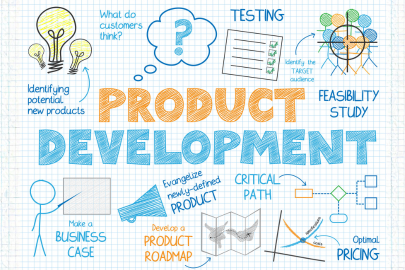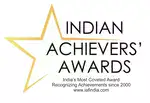Optimizing Product Development Through Qualitative Market Research
Product development today goes beyond creating something new - it’s about ensuring that the product connects with its intended audience, solves real problems, and delivers long-term value. While quantitative data can confirm how many people buy or use a product, qualitative market research goes deeper by exploring why consumers behave the way they do. By using descriptive qualitative research and other advanced qualitative data collection methods, organizations gain the market information they need to design products that align with user expectations and market realities.
This article explores the critical factors influencing product development, how qualitative market research supports every stage of the product lifecycle, the different types of qualitative research methods, and why partnering with an experienced qualitative research firm such as Unimrkt Research ensures success.
Factors that Affect Product Development
Several interrelated factors shape how a product evolves from an idea into a market-ready solution. Understanding these elements provides the foundation for meaningful qualitative research.
- Consumer Needs & Preferences: Qualitative research uncovers behaviours, frustrations, and unmet needs that determine product success.
- Market Trends & Competition: Contextual insights help brands adapt to shifts in technology, sustainability, and competitor innovation.
- Regulatory & Compliance: In regulated industries, research highlights how consumers perceive compliance-driven changes.
- Technological Capabilities: Beyond feasibility, qualitative data confirms whether new features truly meet user needs.
- Cost & Resource Allocation: Identifies which features add real value, ensuring investments balance innovation with efficiency.
- Cultural & Social Influences: Captures regional differences in colours, symbols, and habits to guide product localisation.
How Qualitative Market Research Helps with Product Development
Qualitative market research supports product development at every stage, from idea generation to post-launch optimization.
- Idea Generation and Concept Screening: Before investing in prototypes, companies use qualitative methods to explore consumer frustrations, desires, and “wish lists.” This ensures that ideas are rooted in validated consumer demand rather than assumptions.
- Design and Prototyping: Through In-depth Interviews and Focus Group Discussions, researchers gather feedback on product prototypes, packaging, or branding elements. This step helps refine usability, aesthetics, and emotional appeal.
- Pre-Launch Testing: In-home Usage Tests allow participants to interact with products in real-world settings. This reveals not only how the product functions but also how it fits into daily routines, identifying gaps that lab testing might overlook.
- Market Entry and Positioning: Qualitative data research helps companies understand how consumers perceive product value, pricing, and positioning. This feedback guides marketing strategies and ensures effective communication at launch.
- Post-Launch Evaluation: After launch, qualitative research tracks ongoing consumer experiences. Brands can identify pain points, monitor loyalty, and adapt features or messaging to enhance product lifecycle longevity.
By integrating consumer feedback at every stage of development, businesses minimize risks, improve adoption, and strengthen brand relevance.
Types of Qualitative Market Research to Explore
Qualitative research encompasses multiple methodologies, each designed to gather rich, contextual data. Here are the most impactful approaches for product development:
1. In-Home Usage Tests (IHUTs)
- Purpose: To assess how product prototypes perform in real-life conditions.
- Method: Participants are given the product to use at home for a set period. They provide feedback through journals, interviews, or digital diaries.
- Benefits: Captures data on real consumer behavior, identifies usability issues, and highlights product strengths and weaknesses in everyday contexts.
- Example: A household cleaning product manufacturer conducts IHUTs to observe whether packaging design supports ease of use and whether the product delivers the promised results over time.
2. In-Depth Interviews (IDIs)
- Purpose: To explore individual perspectives in detail.
- Method: One-on-one conversations between a researcher and a participant, often lasting 30–90 minutes.
- Benefits: Offers rich data about the motivations, emotions, and decision-making processes. Ideal for sensitive topics or high-involvement products.
- Example: A healthcare company interviews patients to understand barriers to medication adherence, shaping product packaging and communication strategies.
3. Online Bulletin Boards (OBBs)
- Purpose: To engage participants in asynchronous discussions over several days.
- Method: Respondents log in at their convenience to answer questions, post thoughts, or react to others’ comments in a moderated forum.
- Benefits: Encourages thoughtful responses, enables participation across geographies, and allows researchers to observe evolving opinions.
- Example: A tech brand uses an OBB to explore user expectations for a new wearable device, gaining insights from both early adopters and mainstream users.
4. Focus Group Discussions (FGDs)
- Purpose: To observe group dynamics and collective opinions.
- Method: A moderator guides 6–10 participants through structured discussions on product concepts or experiences.
- Benefits: Facilitates idea generation, surfaces differences in perception, and allows researchers to test stimuli such as prototypes or advertisements.
- Example: A food and beverage company conducts FGDs to gauge taste preferences and packaging appeal across age demographics.
Product development is complex, influenced by consumer preferences, market forces, and technological shifts. By leveraging qualitative market research, organizations move beyond surface-level statistics to uncover the motivations, emotions, and contexts that drive consumer behavior. Whether through In-home Usage Tests, In-depth Interviews, Online Bulletin Boards, or Focus Group Discussions, qualitative research ensures products are designed not just to function, but to connect. With the right research partner, businesses can access rich market data to design powerful strategies, reducing risks, maximizing adoption, and delivering long-term market success.
For Qualitative Market Research, Choose Unimrkt Research
When it comes to optimizing product development, partnering with a reputable research firm ensures the accuracy, depth, and reliability of market data. Unimrkt Research has been a trusted name in qualitative market research for over 15 years. Our firm is ISO 20252 and ISO 27001 certified, underscoring our commitment to both methodological excellence and data security. With a wide array of qualitative market research tools - ranging from in-depth interviews and focus group discussions to in-home usage tests and online bulletin boards - Unimrkt delivers actionable market data that empowers organizations to make smarter product development decisions. Contact us today to learn how our tailored qualitative market research services can accelerate your product development journey. Call us at +91-124-424-5210, email us at sales@unimrkt.com. Or fill out our contact form.
Frequently Asked Questions
Q1. What is qualitative market research, and why is it important for product development?
Qualitative market research is the study of consumer attitudes, emotions, and motivations using non-numerical data. Unlike quantitative surveys that provide numbers, qualitative data research explores the why behind customer behavior. This approach helps companies design products that align with real consumer needs, making it a crucial part of the product development process.
Q2. What are the main types of qualitative research methods used in product development?
The most common types of qualitative research methods include In-depth Interviews, Focus Group Discussions, Online Bulletin Boards, and In-Home Usage Tests. Each method provides unique market data, from individual motivations to group dynamics and real-world product usage.
Q3. How does descriptive qualitative research differ from other approaches?
Descriptive qualitative research focuses on capturing detailed, first-hand accounts of consumer behavior and experiences. Instead of measuring responses on a scale, it highlights the words, emotions, and stories that reveal how people interact with products. This depth of understanding helps businesses refine product features and messaging.
Q4. At what stage of product development should qualitative market research be conducted?
Qualitative market research adds value at every stage of product development. During ideation, it uncovers unmet needs. In the prototyping phase, it tests usability and appeal. Pre-launch, it validates concepts and packaging. Post-launch, qualitative data collection helps evaluate customer satisfaction and identify improvement areas.
Q5. What role do in-home usage tests play in qualitative data collection?
In-home usage tests allow consumers to try products in their natural environment. This method of qualitative data collection shows how a product fits into daily life, highlighting real-world performance, usability issues, and long-term satisfaction. This type of market data often provides a more realistic picture than lab testing.
Q6. How can companies apply market data from qualitative data research?
Businesses use qualitative data research to refine product features, adjust branding strategies, map customer journeys, and identify barriers to adoption. By translating consumer feedback into actionable decisions, companies reduce risks and improve the chances of market success.
Q7. Why should businesses choose Unimrkt Research for qualitative market research?
Unimrkt Research brings over 15 years of experience in qualitative market research, offering ISO 20252 and ISO 27001 certified services. With expertise in diverse qualitative research methods, the firm ensures reliable market data that guides well-informed product development decisions.
Quick Enquiry
Customer Service, We Make it Better
Recent Posts
- How to Clarify and Align Your Research Goals for Maximum Impact
- Mining Valuable Data: The Driving Force for an Effective Growth Marketing Strategy
- Speaking the Customers Language: 7 Tips for Meaningful Qualitative Research
- Creating Value for Investors: The Benefits of Primary Market Research
- Utilizing Closed-Ended Questions For Quantitative Market Research
- Capturing the Changing Interests of Millennials Through Qualitative Research
- Refining Unit Economics with Robust Quantitative Market Research
- A Concise Guide to Quantitative Market Research
- 3 B2B Market Research Trends That Could Shape 2024
- Eyes on 2024: Changes That Might Disrupt the Healthcare Industry This Year
- Cracking the Language to Make Survey Questions Inclusive in 2024
- Attracting Investors: How Market Research Can Solidify Your Case
- Solid Foundations: Ways to Enhance Trustworthiness in Qualitative Research
- What Makes CATI Research So Effective?
- Moderator Qualities That Improve Qualitative Market Research
- 5 Consumer Market Trends That Will Define 2024
- What are the strengths of quantitative research?
- How to Make Your Partnership with Primary Market Research Firms Fruitful
- A Quick Guide to Harnessing the Strengths of Quantitative Research
- Advice from Your Research Partner: Don't Compromise Quality on Online Surveys
















